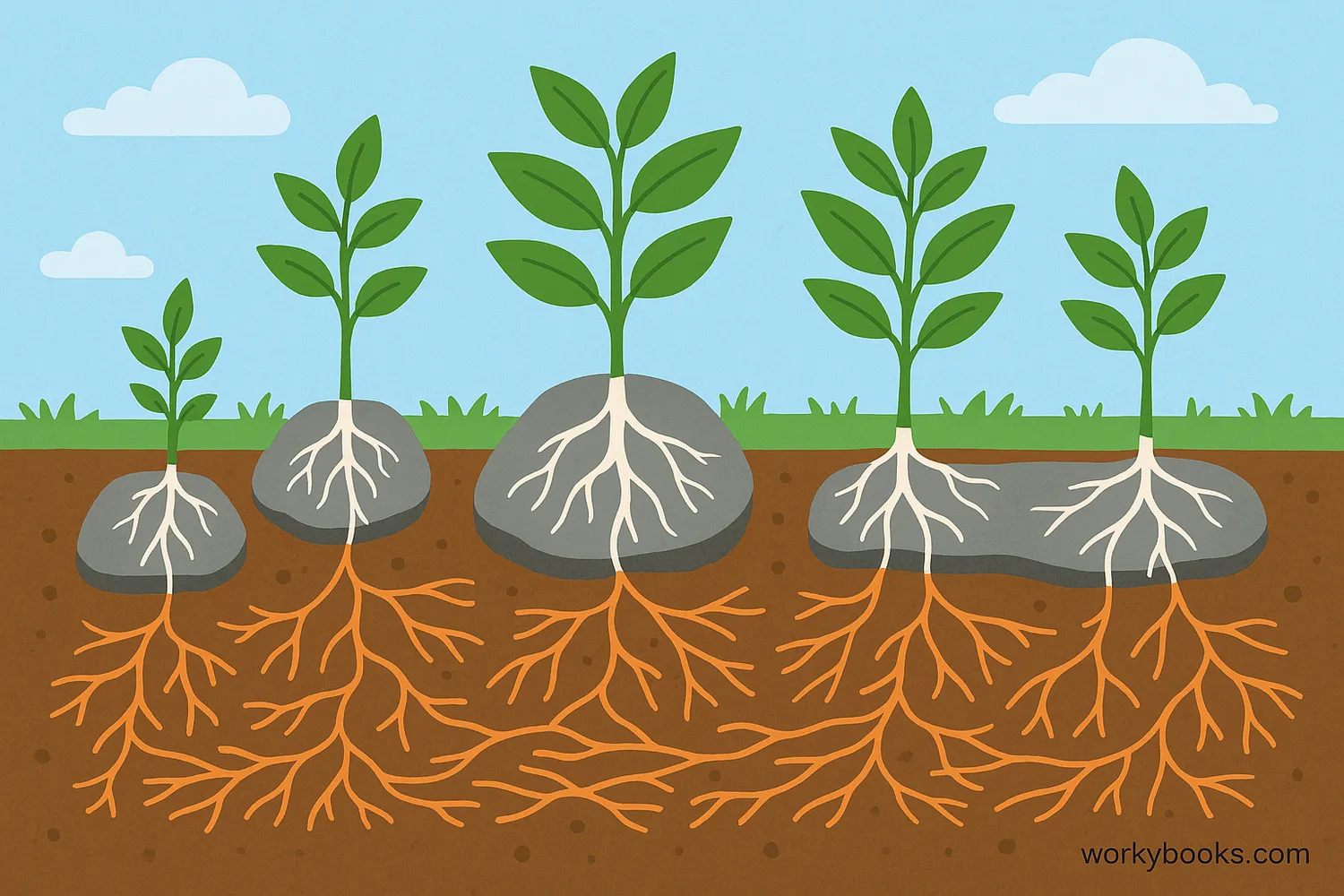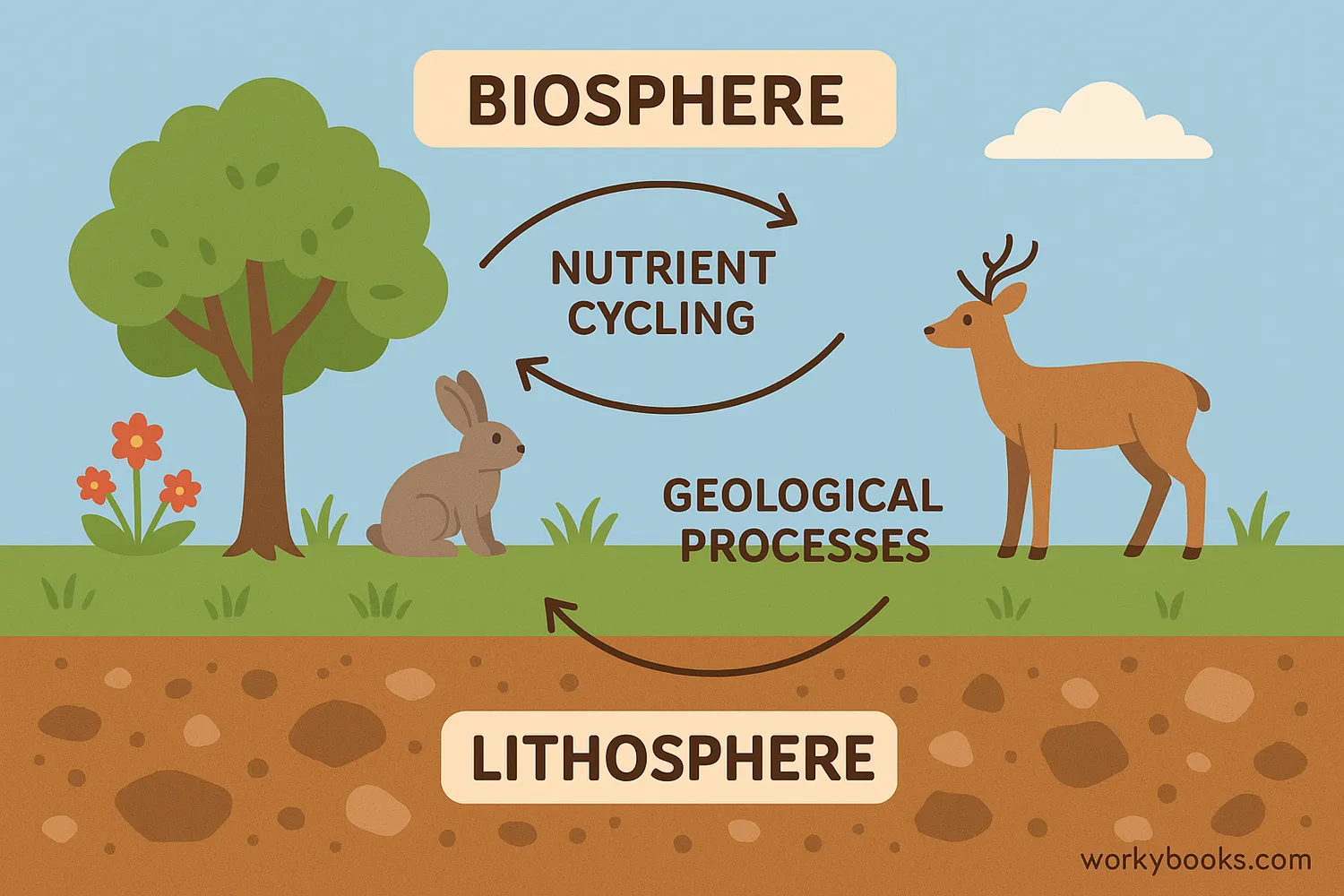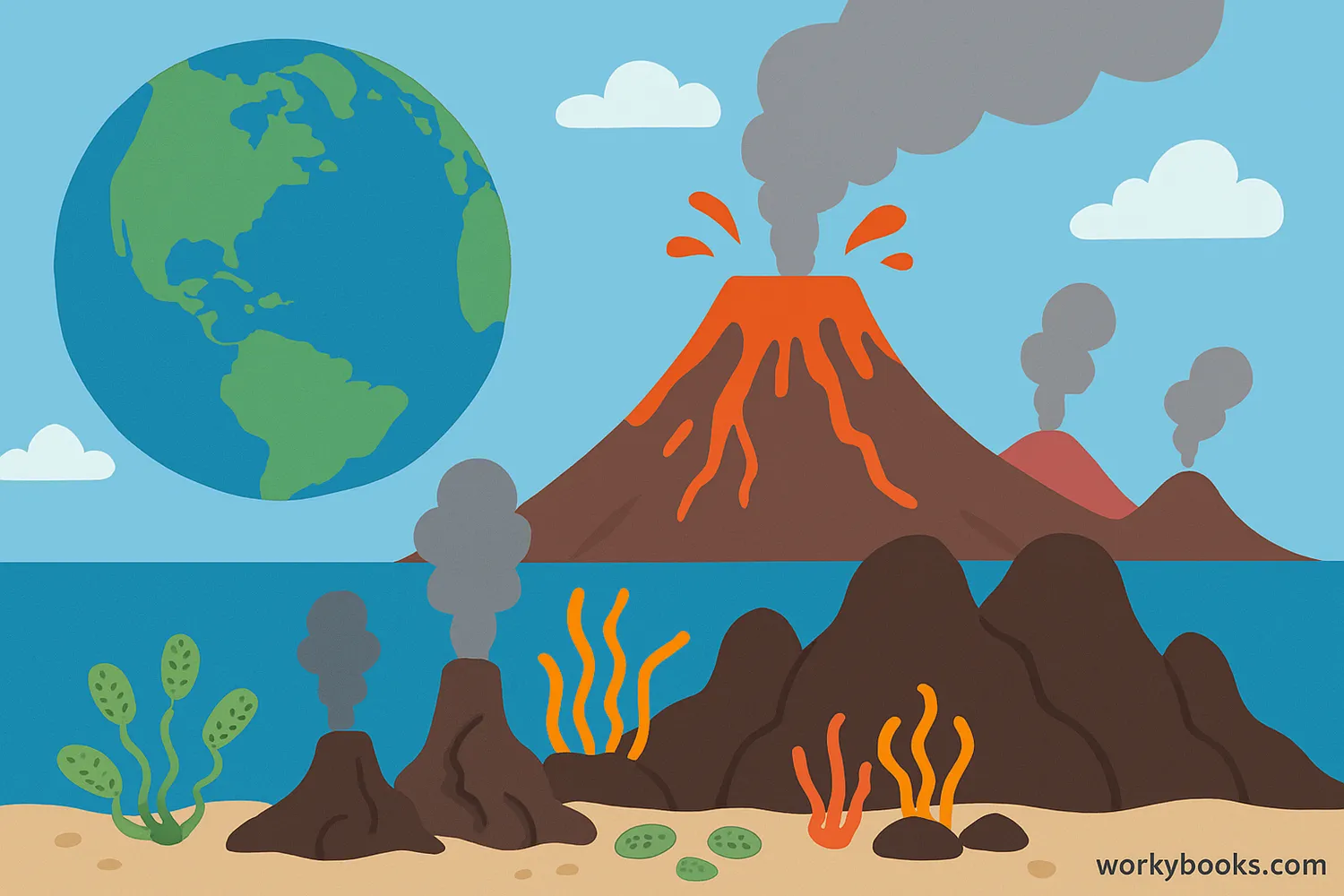Biogeology - Definition, Examples, Quiz, FAQ, Trivia
Discover how living things and Earth's rocks interact and shape our planet!
What is Biogeology?

Biogeology is the scientific study of how living things interact with the Earth's geological features! It explores how plants, animals, and microorganisms affect and are affected by rocks, minerals, and Earth's processes.
Think of biogeology as nature's recycling system! Living organisms break down rocks to get nutrients, and in turn, these organisms help create new soil and even influence the formation of certain rocks. Without these interactions, our planet would look very different!
Did You Know?
Lichens—those crusty growths on rocks—are actually partnerships between fungi and algae that slowly break down rocks into soil!
Interactions Between Biosphere and Lithosphere

The biosphere includes all living things on Earth, while the lithosphere is Earth's rocky outer layer. These two systems interact in fascinating ways:
Weathering
Plant roots and microorganisms break down rocks into soil
Nutrient Cycling
Rocks provide essential minerals that organisms need
Formation
Organisms help create new rocks like limestone from shells
Modification
Life changes Earth's atmosphere, which affects rock weathering
These interactions create a continuous cycle where life shapes the Earth, and the Earth provides the materials life needs to survive. For example, coral reefs are living structures that build massive limestone formations underwater!
Biogeochemical Cycles
Biogeochemical cycles are nature's recycling programs that move essential elements between living organisms and the Earth. The most important cycles include:
Carbon Cycle
Carbon moves between atmosphere, oceans, life, and rocks
Nitrogen Cycle
Bacteria help convert nitrogen between forms plants can use
Phosphorus Cycle
Weathering releases phosphorus from rocks into ecosystems
These cycles ensure that essential elements are continuously available to living organisms. For instance, when plants and animals die, decomposers break them down and return nutrients to the soil, making them available for new growth.
Rock to Life
The phosphorus in your DNA and bones originally came from rocks that were weathered over thousands of years!
Origin of Life and Microbial Influence

Biogeology helps us understand how life might have begun on Earth and how tiny microorganisms have dramatically changed our planet:
Origin Theories
Life may have begun in mineral-rich hydrothermal vents
Microbial Power
Tiny organisms dramatically changed Earth's early atmosphere
Rock Formation
Microbes help form stromatolites and other sedimentary rocks
Climate Influence
Microorganisms affect greenhouse gases and climate regulation
The earliest life forms were microorganisms that began transforming Earth's chemistry billions of years ago. These tiny organisms started producing oxygen through photosynthesis, which eventually led to the oxygen-rich atmosphere we have today.
Living Rocks
Stromatolites are rocky structures formed by layers of cyanobacteria. Some are over 3.5 billion years old—among the oldest evidence of life on Earth!
Biogeology Knowledge Quiz
Test your biogeology knowledge with this quiz! Answer all 5 questions to see how much you've learned.
Frequently Asked Questions
Here are answers to some common questions about biogeology:
Fascinating Biogeology Facts
Discover some amazing facts about biogeology!
Microbial Miners
Some bacteria can extract valuable metals from rocks! This process, called biomining, is used to recover copper, gold, and other metals from low-grade ores that would be too expensive to mine using traditional methods.
Living Rocks
Stromatolites are among the oldest fossils on Earth, dating back over 3.5 billion years. These layered structures were formed by cyanobacteria and provide evidence of some of the earliest life on our planet.
Rainmakers
Certain marine algae release a chemical called dimethyl sulfide that helps water vapor condense in the atmosphere, potentially influencing cloud formation and weather patterns over oceans.
Tree Weathering
A single tree can draw up to 100 gallons of water from the ground each day! This water contains dissolved minerals from rocks, helping to weather them and contributing to soil formation.





